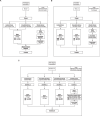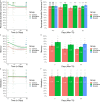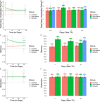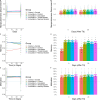Psychological booster shots targeting memory increase long-term resistance against misinformation
- PMID: 40069544
- PMCID: PMC11897321
- DOI: 10.1038/s41467-025-57205-x
Psychological booster shots targeting memory increase long-term resistance against misinformation
Abstract
An increasing number of real-world interventions aim to preemptively protect or inoculate people against misinformation. Inoculation research has demonstrated positive effects on misinformation resilience when measured immediately after treatment via messages, games, or videos. However, very little is currently known about their long-term effectiveness and the mechanisms by which such treatment effects decay over time. We start by proposing three possible models on the mechanisms driving resistance to misinformation. We then report five pre-registered longitudinal experiments (Ntotal = 11,759) that investigate the effectiveness of psychological inoculation interventions over time as well as their underlying mechanisms. We find that text-based and video-based inoculation interventions can remain effective for one month-whereas game-based interventions appear to decay more rapidly-and that memory-enhancing booster interventions can enhance the diminishing effects of counter-misinformation interventions. Finally, we propose an integrated memory-motivation model, concluding that misinformation researchers would benefit from integrating knowledge from the cognitive science of memory to design better psychological interventions that can counter misinformation durably over time and at-scale.
© 2025. The Author(s).
Conflict of interest statement
Competing interests: The authors declare no competing interests.
Figures






References
-
- Lewandowsky, S., Ecker, U. K. H. & Cook, J. Beyond misinformation: understanding and coping with the ‘post-truth’ era. J. Appl. Res. Mem. Cogn.6, 353–369 (2017).
-
- Lewandowsky, S. et al. Technology and democracy: understanding the influence of online technologies on political behaviour and decision-making. Publications Office of the European Union10.2760/709177 (2020).
-
- Loomba, S., de Figueiredo, A., Piatek, S. J., de Graaf, K. & Larson, H. J. Measuring the impact of COVID-19 vaccine misinformation on vaccination intent in the UK and USA. Nat. Hum. Behav.5, 337–348 (2021). - PubMed
MeSH terms
Grants and funding
LinkOut - more resources
Full Text Sources
Medical

